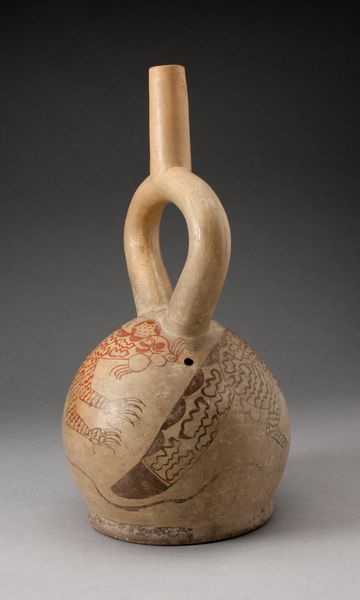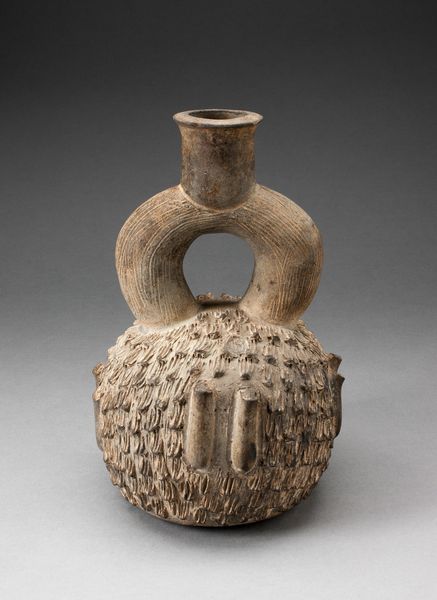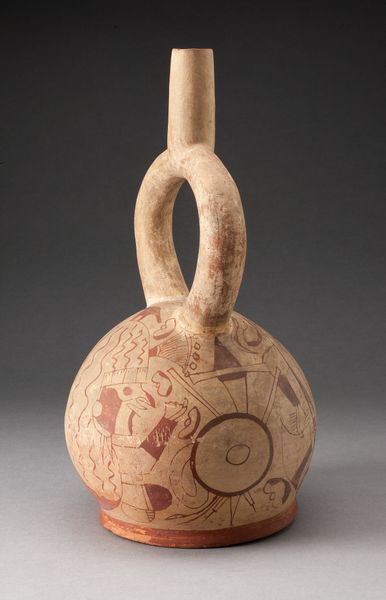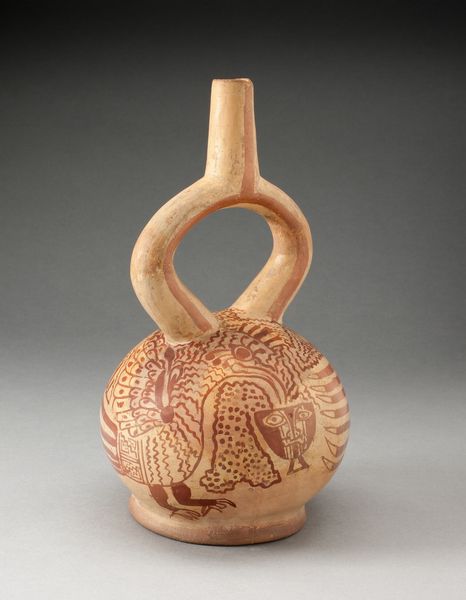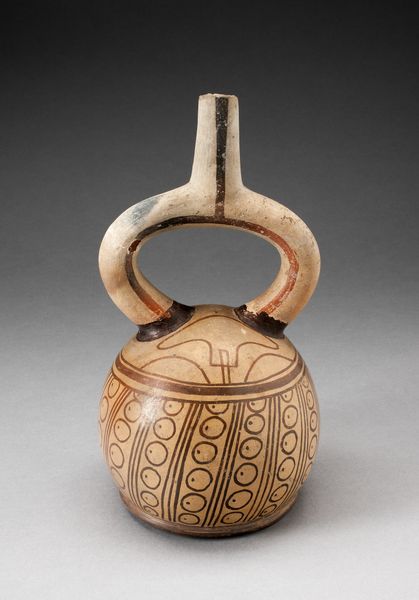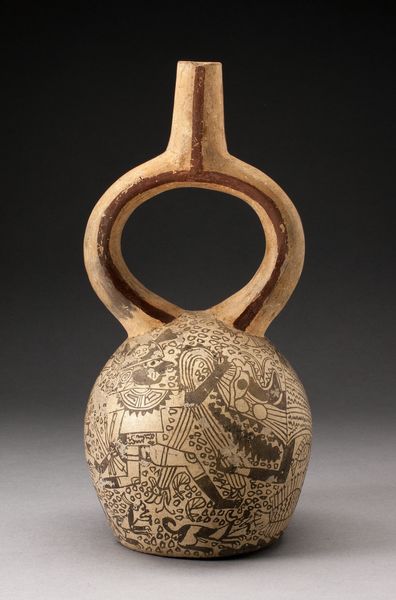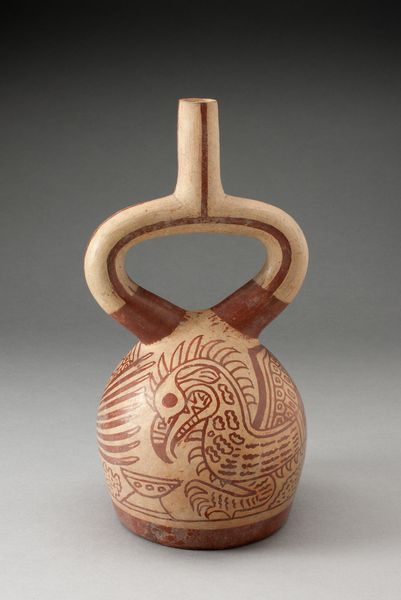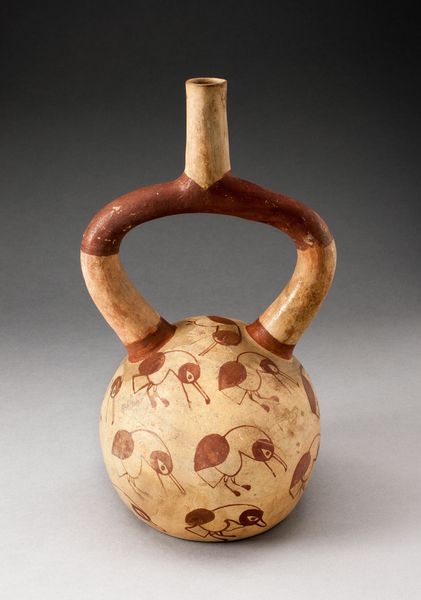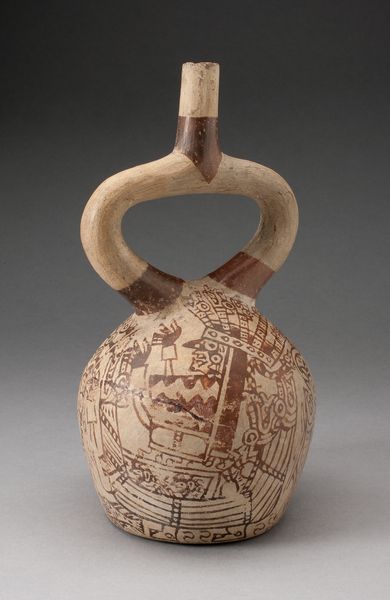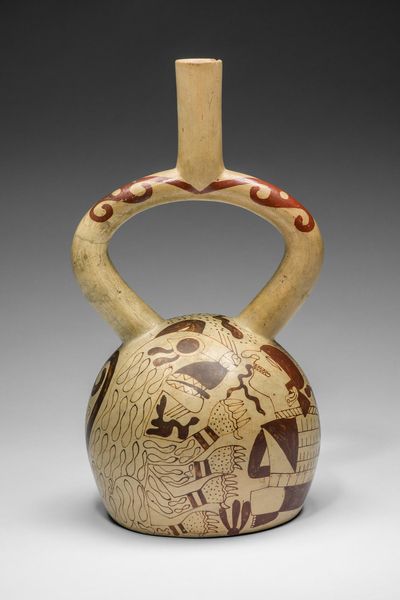
Spout Vessel with Fineline Painting Depicting a Supernatural Wearing a Shell c. 100 - 500
0:00
0:00
ceramic
#
ceramic
#
figuration
#
ceramic
#
indigenous-americas
Dimensions: H. 23.3 cm (9 3/16 in.)
Copyright: Public Domain
Editor: We’re looking at a ceramic “Spout Vessel with Fineline Painting Depicting a Supernatural Wearing a Shell,” made by the Moche people around 100 to 500 AD. It’s currently held at The Art Institute of Chicago. I’m struck by how this functional object is also elaborately decorated with narrative art. How do you interpret this piece from a formalist perspective? Curator: Note the duality inherent in its design. The smooth, almost austere lines of the vessel’s structure contrast sharply with the intricate detailing of the fineline painting. The artist employed a restricted palette, relying on tonal variations to define forms. Consider how this affects your understanding of the depicted subject matter: A supernatural being adorned with a shell. How does the form of the vessel enhance or detract from the narrative presented? Editor: That’s a good question! I hadn't really considered how the vessel’s rounded form, against the linear details of the drawing, impacts the representation of this figure, it almost looks abstract. Curator: Precisely. Abstraction co-exists with figuration. Semiotically, the spout becomes a signifier itself. Its function, carrying liquid, imbues the painted image with symbolic properties relating to sustenance or ritual libation. Notice, also, how the curvature emphasizes volume while simultaneously creating a flattening effect in the image, it also suggests a cyclical sense of meaning, constantly evolving between figure and surface. Editor: So, by analyzing its construction and composition, we can learn more about the thought and significance behind its creation. I now better understand the interplay between the material form and artistic expression. Curator: Indeed. Formalism urges us to appreciate not only what the work depicts but *how* it does so. By investigating structure, one gains entry into cultural contexts embedded in it.
Comments
No comments
Be the first to comment and join the conversation on the ultimate creative platform.
